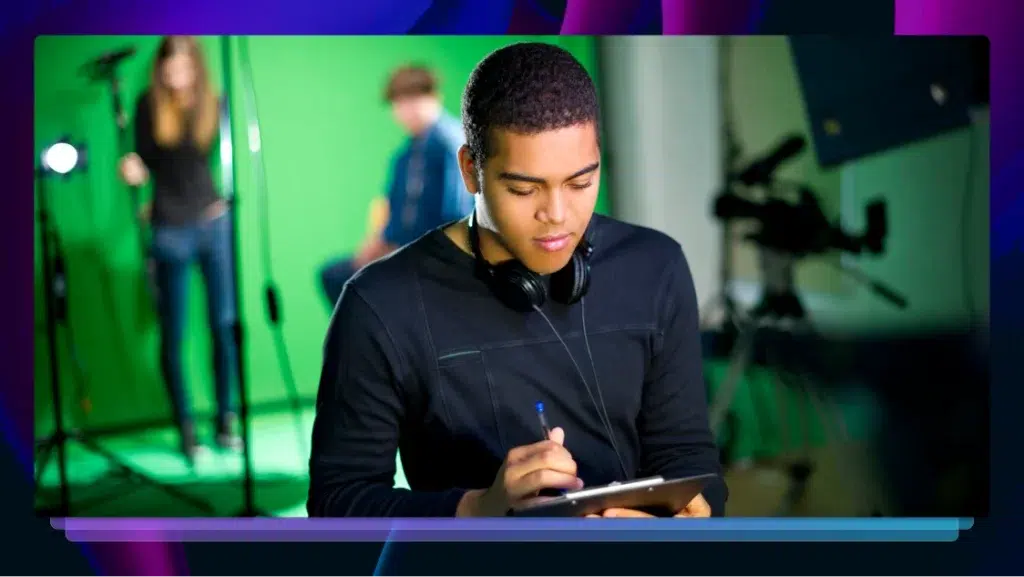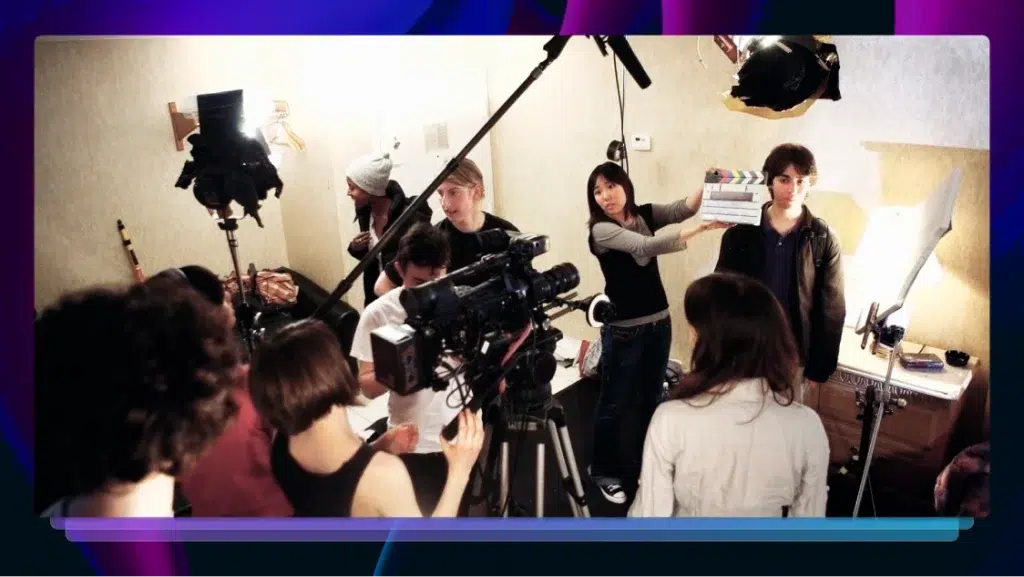How to Create a Documentary Pitch Deck (+ Examples)
Learn what needs to go into your documentary pitch deck to communicate with investors and secure funding. We’ve also provided some examples!

As a filmmaker, funding is everything. It doesn’t matter whether you’re in the early stages of developing your documentary, or you’re ready to start filming – and even if you’ve met your mark, having a safety net never hurts.
A well-made documentary pitch deck is one of the most important ways to secure the funding you need to make a great film. But investor inboxes are full of pitches from hopeful filmmakers, and they’ll pass over mediocre decks without skipping a beat.
To stand out from the crowd, your documentary pitch deck needs to be persuasive and compelling. It needs to sell your ideas and boost interest in the project. Even though investors have millions of dollars to spend, your documentary is competing against hundreds of others for the same pot of money. Here’s what you need to know.
Elements of a Documentary Pitch Deck
The purpose of your pitch deck is to communicate the vision of your documentary – the ideas you’ll share in it and why they are important to your viewers. It helps investors understand the story you’re trying to tell.
When done right, your documentary pitch deck has the power to convince investors that your project is worth funding. Give your film the best chance for success by including the following information.
Front cover
The front cover of your documentary pitch deck needs to tell the story of your film in one captivating image. The right image will create the type of emotional response you want to conjure in your audience.
Choose an image for your front cover that’s memorable and unexpected. Use bold fonts and colors to make the page visually stunning.
It may be a smart idea to hire a photographer and a graphic designer to create original images that reflect the look and feel of your documentary. If you can’t afford a photographer or graphic artist, use a combination of stock images with a Creative Commons license, stills from what you’ve filmed so far, or examples from similar documentaries.

Proposal
Your proposal is essentially a summary of the documentary. It’s the first content that investors will read, so make it engaging to hold their interest. Include details such as:
- Your target genre. This section will appeal to investors who have an interest in your documentary topic. Also include information about the type of documentary you’re filming and its focus.
- Your documentary logline. This is the documentary’s hook described in one sentence.
- Your budget needs. List items such as rental fees to film on location, cost to transport equipment, cost to hire an editor, etc.
- Your style inspiration. Explain how the documentary will be filmed. Will it use a voice-over approach to guide viewers? Interview style? Or will it use a presenter who appears on camera?
- Your target audience. If you’ve run focus groups to review early audience responses, record their answers to questions, and then transcribe them to pull relevant quotes and information.
- Time and resources needed. Explain how much time it will take to complete the documentary, and highlight what’s already been done. Briefly explain how funds will be used.
- Security. Use this section to explain how you will keep your film set and media assets secure.
Film Synopsis
Rather than typing it all up yourself, get a voice recording of a summary of the plot, then use Rev to transcribe the audio or video file. Not only will this help with the pitch, but it may also help flesh out the story and provide fodder for future marketing and PR initiatives. After all, editorials always need a quote.
In this section, also list documentaries with similar budgets and subject matter. Include ROI, box office, ratings, and audience ratings to give an indication of the potential your documentary has once it’s released.
Audience Details
Identify the audience your documentary targets and why you are choosing to reach them in particular. Also highlight their viewing needs and how you’ll account for this in your budget. For example:
- If you wish for your documentary to be made available to people with hearing problems, include captions.
- If you want distribution in other countries or your documentary features speakers with heavy accents, mention how you’ll include subtitles in 15 different languages (if you use Rev).
Casting Ideas
Unlike films, documentaries don’t require actors to play a cast of characters. However, depending on the type of documentary you’re filming, you’ll have subjects to follow or interview. Explain who these people are in your documentary pitch deck.
If you’re hiring actors for narration, consider the cost. While an A-list celebrity might help draw attention to your documentary, the cost to include them might outweigh the budget you’re asking for.
Director Notes
Talk about the overall vision for the documentary, why you think the film needs to be made, and how you hope audiences will respond. Include the director’s headshot and a list of their past credits.
Writer Notes
Writing a documentary is somewhat ambiguous. Unlike feature films, there isn’t a script to create. However, many documentaries use a narrator. In this section of your documentary pitch deck, explain how you’ll weave together the story.
Explain the motivations behind the narrator’s scripts and the ideas you will share with the audience. For interview-style documentaries, include in the writer notes the types of questions you’ll ask.
A headshot of your writer and their past experience, nominations, and awards should also be incorporated.
Producer Notes
List your producer’s previous experience and the documentaries they’ve worked on in the past. Include headshots for each producer – up to three – with a brief bio underneath each.
Back-Page
Use this space for your closing statements and contact information.
Depending on the stage of development and production your film is in, your documentary pitch deck may require even more information. If you’re in the early stages of development, include sales projections. If you’re in the late stages of production, include your marketing budget and a distribution plan that includes video on demand, film festivals, or streaming services.
Once you have the content for your pitch deck and images, design it using tools like Adobe InDesign or PowerPoint. You can even hire a design agency to compile the deck and convert it to PDF.
Examples of Documentary Pitch Decks
Now that we’ve covered what to include in your documentary pitch deck so that it gets noticed by investors, let’s look at two examples of documentary pitch decks and explore what they’ve done well.
The Founders
The Founders is a 2016 documentary that follows 13 female golfers in 1950s America. The discrimination that they faced led them to create the Ladies Professional Golf Association. The style of the documentary used is a mix of archival footage, interviews with some of the original players, and commentary from current LPGA members and players.
The documentary had an estimated budget of $350,000 and has been well received by audiences. The Founders pitch deck does three things really well:
Archival images are used throughout.

The images focus on the 13 women as they played golf and traveled to tournaments. Using these images gives investors a glimpse into what the documentary will look like and who the women are. The images also show the camaraderie among the women and the bond they shared while pushing against stereotypes.
Funding needs are outlined.

After the pitch deck walks readers through why the documentary is needed, explains the story and how it’ll be told, and offers mini bios of the women, it ends with funding needs.
Adding funding needs here works in this case because the pitch deck has built up the story to this point. The deck does a good job of carefully conveying how these women triumphed over adversity before it gets into how readers can help.
A quote is included on the back page.

The quote above, from a former player, highlights the mental strength of these women and their ability to overcome the odds stacked against them. The quote is an example of the overall theme of the documentary – these women worked hard to make a difference. It also leaves readers with a good feeling and concludes by focusing on the victories. Using a feel-good tactic is a great way to elicit a positive emotional response from investors.
Project: Building Hope
Project: Building Hope is about two women with immigrant backgrounds who use art to educate and understand underserved youth in Chicago and East Africa. The documentary follows their three-year journey as they reconnect with their own identities and bring hope to struggling communities.
The goal of their pitch deck was to attract the attention of donors and use the funds to get the documentary considered for festival screenings and grants. The deck does two things well:
The artistic approach is made clear.

The second page of the pitch deck explains what type of documentary this is. The approach is explained as a combination of interviews with the filmmakers and youth subjects, fly-on-the-wall footage, and archival footage. A summarized filming style gives readers an idea of what the documentary will look and feel like.
A distribution plan is included.

Project: Building Hope was complete by the time the pitch deck was created. Sharing a distribution plan at this stage shows investors how much market research has been done and whether the identified strategies use the right channels.
The documentary pitch deck lists which festivals the producers are targeting, but goes one step further to list the events the documentary will be screened at. This section ends by mentioning the documentary’s inclusion in educational curriculums in the United States and East Africa.
The Pitch Email
Now that you have a clear and compelling documentary pitch deck, all you need are investors to read it. Not surprisingly, the inboxes of most documentary investors are packed with pitches. To entice investors to open and read it, your email needs to stand out from the rest:
- Write a creative subject line. Describe what’s in the email, using only a few words. Be cautious to not mislead readers by promising something you don’t deliver in the email or pitch deck.
- Use your logline as the preview text. Preview text is the summary sentence you see before opening an email. Use it to quickly grab attention.
- Customize your message. Even if you have to email 50 investors, fight the urge to use a mass-mailing template. Instead, tailor each email to an investor’s interests. If relevant, highlight how your documentary relates to a cause they support.
Follow up within a week of sending your first email. This gets your pitch back to the top of the inbox and shows investors how serious you are; you’re not just pitching random investors and hoping something sticks. Adjust your email and pitch deck until you find a formula that works for you.















